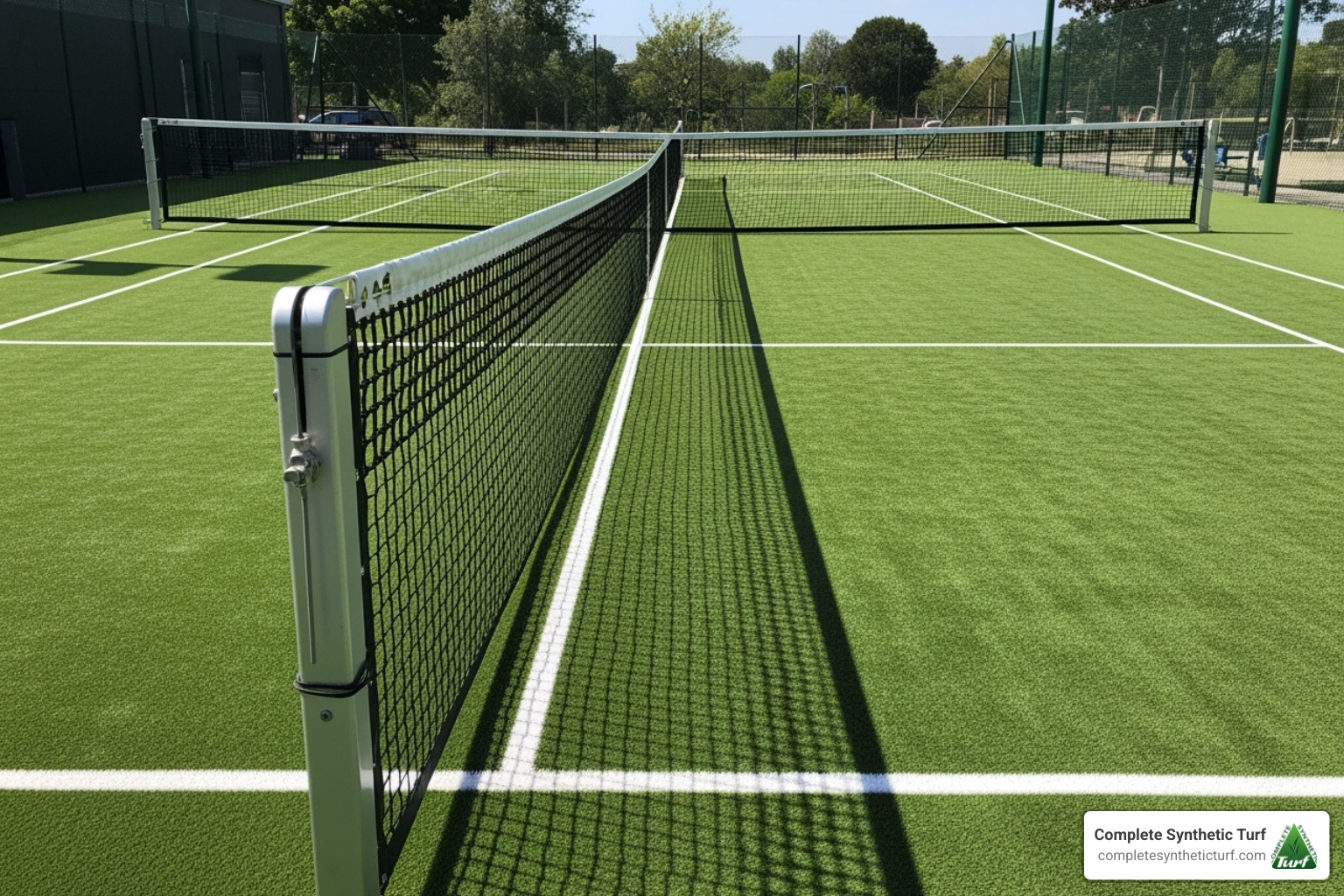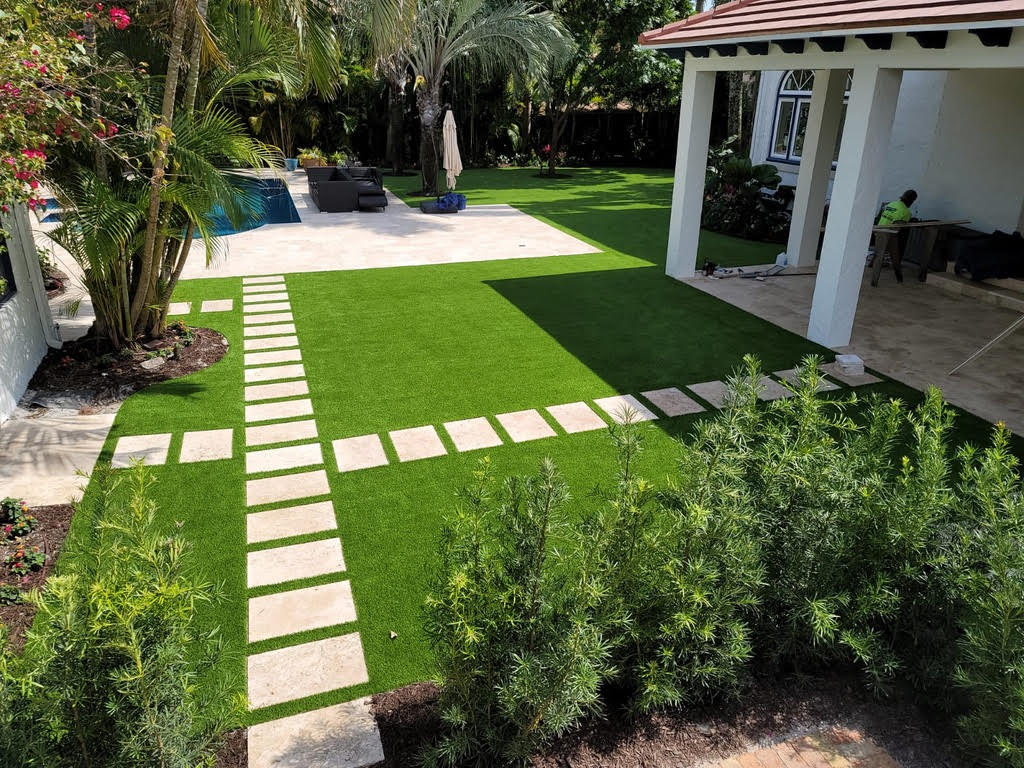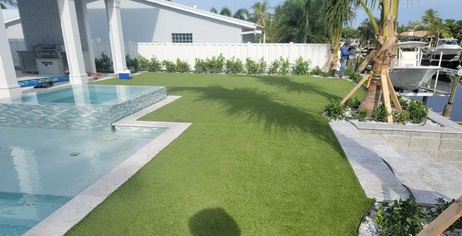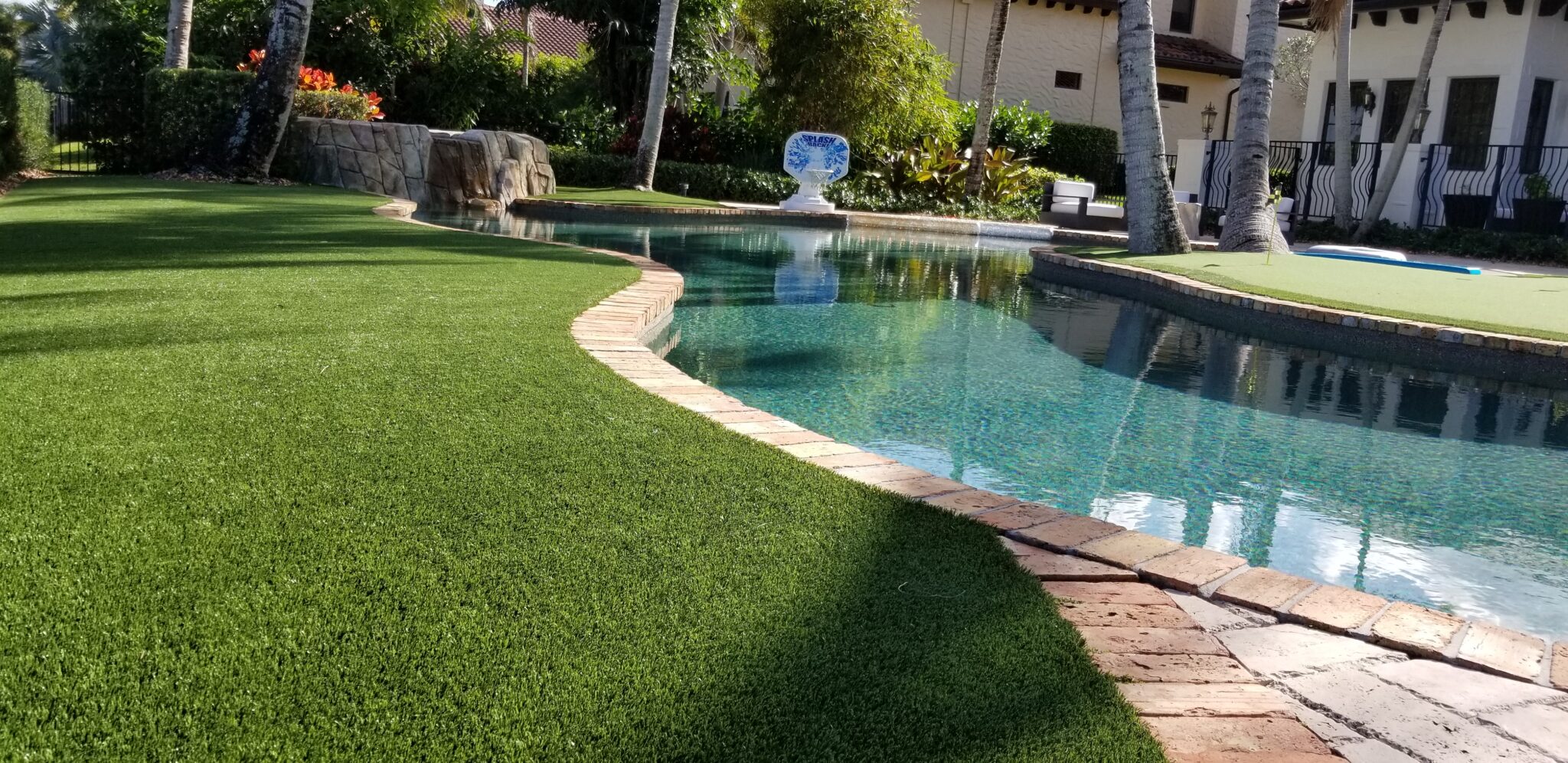Artificial Grass for Tennis Courts: #1 Ultimate Guide
Your Ultimate Guide to the Perfect Serve and Surface
Artificial grass for tennis courts offers a modern solution combining the elegance of traditional grass with the durability and low maintenance of synthetic materials. For homeowners and HOA property managers alike, choosing the right surface is key to a great tennis experience.
Quick Answer: Best artificial grass tennis courts feature:
- Sand-filled or sand-dressed synthetic turf with polyethylene fibers
- 10-25 year lifespan with minimal maintenance
- All-weather playability – ready immediately after rain
- Consistent ball bounce and speed similar to clay courts
- Joint-friendly surface that reduces injury risk
- Installation costs around $100,000 but saves long-term on maintenance
Since lawn tennis was adopted at Wimbledon in 1880, natural grass was the standard. However, maintaining pristine grass courts today is a costly headache for most.
The shift is clear: More players are choosing synthetic alternatives for consistent performance without the constant watering, mowing, and reseeding natural grass demands.
This guide covers everything about artificial grass tennis courts: performance, installation, costs, and maintenance. Find why these surfaces are gaining popularity in Australia, Europe, and across the United States.

Artificial grass for tennis courts further reading:
The Winning Advantage: Why Choose a Synthetic Grass Tennis Court?

Imagine your court is soggy from last night’s rain. With natural grass, you’d wait hours or even days. With artificial grass for tennis courts, you can be serving aces within minutes.
All-weather playability is a game-changer. Advanced drainage systems mean water flows through quickly, leaving a playable surface almost immediately after rain. No more canceled matches.
The low maintenance benefits are a major draw. Forget weekend mowing, watering during Florida’s dry spells, reseeding bare patches, and fighting weeds. You’ll spend more time playing.
This translates to serious water conservation. Replacing natural grass saves thousands of gallons annually, significantly lowering your water bill. Our products are 100% recyclable, free of harmful ingredients, and backed by a comprehensive manufacturer’s warranty, making them kind to the environment and your schedule.
Player safety gets a major upgrade. The joint-friendly design provides excellent impact absorption, reducing stress on your knees, ankles, and hips. Players report reduced fatigue and fewer aches compared to hard courts.
Multi-sport versatility means your investment works harder, easily accommodating pickleball, volleyball, or casual games. For larger facilities, check out our expertise in Artificial Grass for Sports Fields in South Florida.
A beautiful, always-ready tennis court is a luxury amenity that increases property value. It signals “low maintenance, high enjoyment” to potential buyers.
The bottom line: Artificial grass for tennis courts delivers consistent, low-effort performance year after year. More time playing, less time maintaining—a winning combination.
Decoding On-Court Performance and Player Experience

Imagine a court where every ball bounces predictably, with no weird hops or slippery spots. That’s the rock-solid consistency of artificial grass for tennis courts. Unlike natural grass, synthetic turf provides the same ball bounce and speed from baseline to baseline, every match.
The comfort factor is a major benefit. The surface absorbs impact, reducing stress on your knees and ankles during long matches. Players report feeling less beaten up compared to hard courts. Excellent foot stability allows you to plant and pivot with confidence, knowing the surface supports your most aggressive moves.
Artificial grass for tennis courts are already used in professional sports like Padel and are extremely popular in other countries. In Australia, for example, synthetic grass courts make up about 95% of all courts in some areas. Sydney has roughly nine synthetic grass courts for every hard court because players love how they perform.
How does the gameplay compare to other court surfaces?
Artificial grass for tennis courts borrow the best traits from other surfaces while fixing their biggest problems.
- vs. Natural Grass: Artificial turf offers the elegance of grass without the maintenance headaches and inconsistent bounces caused by weather and wear. It delivers a classic grass court feel reliably every time.
- vs. Hard Courts: The difference in comfort is significant. Hard courts are unforgiving and tough on your body. Artificial grass provides similar court speed but with superior impact absorption, combining hard court performance with the joint-friendly qualities of clay.
- vs. Clay Courts: Artificial grass allows for controlled sliding just like clay, reducing injury risk from jarring stops. It provides good traction when you need to grip and just enough slide when you need to flow into a shot.
The ball behavior is predictable, with consistent ball bounce and spin response. Court speed can be engineered, but most installations offer a medium-paced game suitable for all players.
What shoes are best for synthetic turf?
You don’t need specialty shoes for modern artificial grass for tennis courts. A quality pair of all-court tennis shoes is your best bet. Look for a non-aggressive tread pattern, like herringbone or small pimpled soles, for excellent grip without catching on the turf fibers.
Avoid running shoes or cross-trainers with deep, aggressive treads, as they can snag on the surface and increase injury risk. If you’re used to clay, your clay court shoes will likely work perfectly, as both surfaces reward a smooth, sliding style of movement.
Designing Your Court: Types and Installation of Artificial Grass for Tennis Courts
Artificial grass for tennis courts offers excellent aesthetic appeal and customization. You can select from various colors and layouts to fit your vision for a private residence, club, or multi-sport facility. While traditional green is popular, we also offer vibrant options like blue and red to create a unique playing space that complements your property.
What are the main types of artificial grass for tennis courts?
The world of artificial grass for tennis courts is nuanced, with types designed for different playing styles. Distinctions lie in fiber type, pile height, density, and infill material.
- Sand-filled Turf: Uses longer fibers and more sand infill, creating a slower, clay-like playing experience that allows for controlled sliding.
- Sand-dressed Turf: Features a denser, shorter pile with less sand, resulting in a faster playing surface.
- Fiber Types: Most courts use highly durable, soft, and UV-resistant polyethylene fibre. Advanced systems may use texturized monofilaments for a more natural look.
- Pile Height and Density: These determine the court’s feel and speed. A denser, shorter pile is faster, while a taller pile with more infill is slower and more cushioned.
- Infill Role: Crucial for performance, infill (often industrial ceramic sand) helps fibers stand upright, provides cushioning, aids drainage, and dictates ball bounce.
Some systems are engineered to mimic the look and play of clay or gravel courts, offering a wide range of options to tailor the perfect surface to your needs.
The Installation Process from Base to Baseline
A successful artificial grass for tennis courts installation depends on a properly prepared base for long-term durability, performance, and drainage. Our experienced team handles every step, from design to installation, ensuring a flawless finish.
Artificial grass can be installed over several base types:
- Existing Sealed Tennis Courts: A cost-effective option is installing over an existing hard court after cleaning, sealing cracks, and leveling. This is ideal for refreshing old courts. Learn more about Tennis Court Resurfacing with Artificial Grass.
- Concrete Slab: A new or existing concrete slab provides a very stable base.
- Crushed Stone Aggregate Base: A common choice for new courts, this base offers excellent stability and drainage.
Effective drainage, often a slight slope, is integrated into the sub-structure to prevent puddling. Once the base is ready, turf rolls are laid, seamed, and filled with sand infill to support the blades and define the court’s playing characteristics. Our expertise as a Sports Turf Installation Company ensures precision at every stage.
A Smart Investment: Maintenance, Durability, and Cost

When considering artificial grass for tennis courts, the numbers tell a compelling story. The upfront investment is a smart financial decision that pays dividends for decades, with many clients seeing a return within five to seven years. After that, it’s pure savings.
Maintenance requirements for artificial grass for tennis courts
Artificial grass for tennis courts shines with its minimal maintenance, freeing up your weekends. Key tasks include:
- Periodic brooming: A quick brush keeps fibers upright and redistributes infill.
- Debris removal: Simply sweep away leaves and twigs.
- Moss prevention: A light spray may be needed in damp, shaded spots, but this is rare in sunny Florida.
- Infill redistribution: Heavy play can shift sand, but brooming easily restores it for consistent ball bounce.
This is a stark contrast to the daily mowing, watering, and weeding of natural grass or the crack repairs and resurfacing of hard courts.
Durability, Lifespan, and Replacement
Our professional-grade artificial grass for tennis courts are built to last. The polyethylene fibers resist Florida’s intense UV rays, maintaining their color and integrity. You can expect a 10 to 25-year lifespan with remarkable wear resistance.
While a 5-year warranty is standard, actual performance far exceeds this. The need to replace the turf is so infrequent that most owners won’t face it for decades.
Cost Comparison: Upfront vs. Long-Term
The initial investment for artificial grass for tennis courts is typically around $100,000. While this may seem high, the long-term savings are significant.
- Reduced water bills save thousands annually, especially in Florida.
- No fertilizer or pesticide costs protect your wallet and the environment.
- Lower maintenance labor provides substantial time and cost savings.
Studies show artificial grass is three times less expensive than natural grass over 20 years. You’re essentially prepaying for decades of tennis enjoyment with no surprise maintenance bills. The return on investment is improved by increased property value and the convenience of an always-ready court.
Frequently Asked Questions about Synthetic Tennis Courts
Considering a switch to artificial grass for tennis courts? It’s natural to have questions. With over 60 years in the business, we’ve heard them all. Here are the most common concerns from homeowners and facility managers.
Can you play on artificial grass tennis courts when it’s wet?
Yes, absolutely. Unlike natural grass that gets muddy or hard courts that become slippery, synthetic turf is designed for wet conditions. The permeable turf and advanced drainage base allow water to flow through quickly, meaning courts are often ready for play within minutes of a downpour ending.
This all-weather playability is a game-changer in Florida, where afternoon thunderstorms are common. It extends your playing season and maximizes the value of your investment, whether you’re in Stuart, West Palm Beach, or anywhere along the coast.
What kind of shoes should I wear on a synthetic turf court?
Modern artificial grass for tennis courts don’t require special shoes. Your best bet is all-court tennis shoes with non-aggressive, pimpled soles or a classic herringbone pattern. This tread provides the perfect balance of grip and controlled sliding.
Avoid running shoes or cross-trainers with deep, aggressive lugs. They can snag on the turf fibers, increasing injury risk and causing unnecessary wear on the court. You want shoes that work with the surface, not against it.
How does an artificial grass court compare to a natural grass or hard court?
Artificial grass for tennis courts offer a unique blend, combining the best features of other courts while eliminating their drawbacks.
- vs. Natural Grass: Artificial grass provides the same beautiful green aesthetic with virtually zero maintenance and year-round playability. It eliminates the constant upkeep (mowing, watering, fertilizing) and inconsistent performance of natural grass.
- vs. Hard Courts: Artificial grass is much kinder to your body. Its natural shock absorption and allowance for controlled sliding significantly reduce joint stress and injury risk. Hard courts are tough on the body and require expensive resurfacing every 5-10 years, whereas synthetic turf lasts 10-25 years with minimal upkeep.
Our Synthetic Grass Tennis Court systems deliver consistency, joint-friendly comfort, and a low-maintenance lifestyle, all while looking fantastic year-round.
Serve Up the Perfect Court for Your Home or Club
Ready to transform your tennis experience? Artificial grass for tennis courts delivers consistent performance for fair, predictable matches. Say goodbye to bad bounces and hello to pure tennis enjoyment.
The low-maintenance aspect is a game-changer, saving you time and money on watering, mowing, and upkeep. This long-term value means more time playing and less time working on your court.
What truly sets artificial grass for tennis courts apart is its kindness to your body. Improved player comfort and safety mean less joint strain and a lower risk of injury. Your knees and ankles will thank you.
At Complete Synthetic Turf, we bring over 60 years of combined experience to turn your tennis court dreams into reality. From design to installation, our professional team handles every detail with expertise.
We proudly serve clients throughout Florida, from the Treasure Coast to the Space Coast, including Jupiter, Boca Raton, Vero Beach, and Melbourne. Whether it’s a backyard court or a community facility, we’re here to help.
Have questions? We encourage them. Give us a call or stop by our new office headquarters in Stuart to see turf samples and discuss your vision. We’ll provide the information you need to make the best decision.





